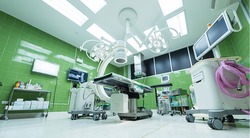
Since 2015, health care regulators and lawmakers have devoted much time, energy and resources into investigating a series of outbreaks of “superbugs” related to the use of duodenoscopes. These devices, used to inspect and treat problems in the intestinal tract, have been linked to at least 35 deaths over the last four years.
But now there is growing concern over the safety of other types of medical scopes used to inspect the gastrointestinal tract, such as endoscopes and gastroscopes. Despite the fact that these devices are simpler in design and easier to clean than duodenoscopes, they can still harbor blood, tissue and bacteria.
Significant Bacterial Growth Found, Even After Cleaning
A new study by the American Journal of Infection Control found bacterial growth in 12 of the 20 gastroscopes and colonoscopes that were examined, despite their being disinfected according to currently accepted guidelines. The bacteria found were not of the superbug category. After the study was completed, 17 of the 20 devices were returned to the manufacturer for repair due to serious defects. All 20 scopes were manufactured by Olympus Corporation of Japan, the world’s leading producer of gastrointestinal scopes.
The problem may lie in the plastic from which the scopes are made. With use, tiny scratches and dents occur at the ends of the scopes. These scratches can harbor debris and tiny amounts of fluid where bacteria can reproduce. Even repeated cleanings of the scopes in the study did not adequately remove this material.
In the study, the 20 scopes were divided into two groups. The first group received regular cleaning and disinfection with glutaraldehyde. The second group received additional cleaning and disinfection with peracetic acid. For colonoscopes, the cleaning regimens were effective 99 percent of the time. However, the outcome was much different for gastroscopes – only 48 percent of were deemed clean after regular cleaning. Even after additional rounds of manual and automated cleaning and disinfection, 11 percent of gastroscopes did not reach the accepted benchmark.
This study was limited, in that it examined only a small number of scopes at one location in the University of Minnesota Health System. But it raises serious questions about the effectiveness of current cleaning methodologies and protocols, as well as the design and materials of Olympus gastrointestinal scopes.

